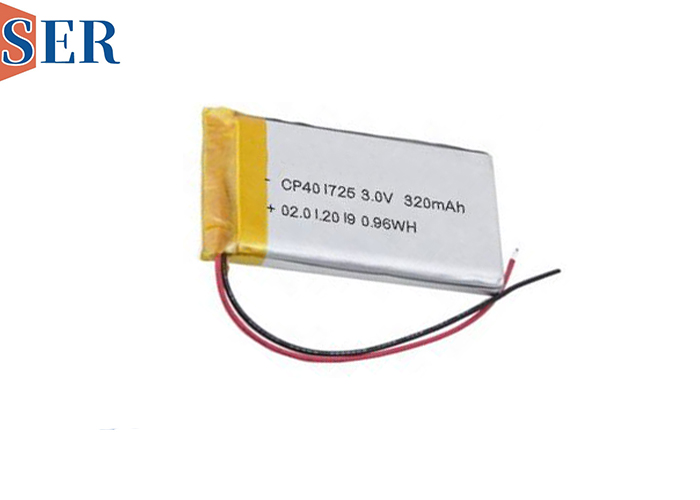Producing and Applications of 3.0V Thin and Disposable Lithium Manganese Soft-packed Batteries
Producing and Applications of 3.0V Thin and Disposable Lithium Manganese Soft-packed Batteries

Introduction
In the ever-evolving world of battery technology, the 3.0V thin soft pack battery, particularly the disposable soft-packed LiMnO2 battery, has emerged as a prominent choice for various applications ranging from consumer electronics to medical devices. The Ultra-thin soft packaging lithium manganese battery offers a unique combination of high energy density, safety, and environmental friendliness, making it a compelling option for manufacturers and end-users alike. This article delves into the production process, advantages, applications, and future prospects of these batteries.
Production Process
The production of 3.0V thin soft pack lithium manganese batteries begins with the careful selection of raw materials. The anode, cathode, electrolyte, separator, and packaging materials are all chosen based on their specific chemical and physical properties that contribute to the overall performance of the battery.
The cathode material, typically LiMnO2, is synthesized through a controlled chemical reaction process that ensures its purity and stability. The anode material, usually lithium metal or a lithium alloy, is also prepared using similar precision techniques. The electrolyte, which serves as the medium for the flow of ions between the anode and cathode, is formulated to be compatible with the chosen materials and to provide optimal ionic conductivity.
The separator, a thin porous membrane, is placed between the anode and cathode to prevent direct contact while allowing the passage of ions. The choice of separator material is crucial in ensuring the safety and efficiency of the battery.
The packaging material, typically a flexible laminate, is chosen for its strength, chemical resistance, and ability to provide a hermetic seal. The packaging process involves laminating the layers of material together to form a secure enclosure for the battery cell.
Once the raw materials are prepared, the assembly process begins. The anode, cathode, separator, and electrolyte are stacked or wound together in a precise sequence to form the battery cell. The cell is then inserted into the soft packaging material, and the packaging is heat-sealed to create a secure and airtight enclosure.
Advantages of 3.0V Thin Soft Pack Lithium Manganese Batteries
High Energy Density: The use of LiMnO2 as the cathode material enables these batteries to achieve higher energy densities compared to traditional alkaline batteries. This means that they can store more energy per unit volume or weight, making them ideal for applications where space and weight are critical.
Long Shelf Life: The stable chemistry of LiMnO2 results in excellent shelf life, even under extreme temperatures. This allows these batteries to be stored for long periods without significant loss of capacity.
Disposable: The disposable nature of these batteries means that they can be easily discarded after use, eliminating the need for recharging or maintenance. This simplifies their use and reduces the overall cost of ownership.
Safety: The soft packaging material and controlled chemical composition contribute to the safety of these batteries. They are less likely to leak or explode, even under abusive conditions, making them a safe choice for a wide range of applications.
Environmental Friendliness: The use of recyclable materials and the absence of heavy metals or toxic chemicals in the battery composition make these batteries more environmentally friendly than traditional batteries.
Applications
The versatility of 3.0V thin soft pack lithium manganese batteries makes them suitable for a wide range of applications. Some of the most common applications include:
Consumer Electronics: These batteries are often found in small consumer electronics devices such as remote controls, toys, and digital cameras. Their high energy density and long shelf life make them a reliable choice for these applications.
Medical Devices: Their safety and disposability make these batteries a popular choice for medical devices such as hearing aids, glucose meters, and other portable medical equipment.
Security Systems: The long shelf life and stable performance of these batteries make them ideal for use in security systems such as smoke detectors and alarms.
Emergency Lighting: The ability to store energy for long periods without significant loss of capacity makes these batteries a good choice for emergency lighting systems.
Future Prospects
With the increasing demand for higher energy density, longer shelf life, and environmental friendliness in battery technology, the 3.0V thin soft pack lithium manganese battery is poised to play an even more significant role in the future. Advances in materials science and battery technology are expected to further improve the performance and safety of these batteries, making them even more attractive for a wider range of applications.
In addition, the increasing focus on sustainability and environmental protection is likely to drive the development of more environmentally friendly battery chemistries and recycling processes. This, in turn, will further enhance the appeal of the 3.0V thin soft pack lithium manganese battery as a viable and responsible choice for battery-powered applications.





